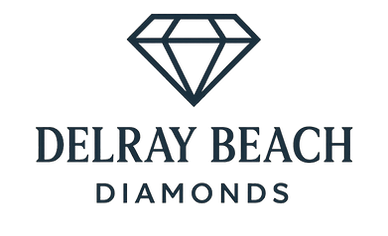
💎 How to Value Loose Conch Pearls: A Collector’s Guide by Delray Beach Diamonds
- This Is Fishing
- Oct 4
- 2 min read
When it comes to evaluating loose conch pearls, understanding what drives their value is essential. Unlike cultured pearls, every conch pearl is a one-of-a-kind natural creation — shaped by time, rarity, and the ocean’s unpredictable artistry. At Delray Beach Diamonds, we use a structured valuation approach that blends gemstone grading standards with real-world market data to ensure fair and accurate pricing.
🔹 1. Understanding What Makes a Conch Pearl Valuable
Four main factors determine the value of a conch pearl:
Color – The most prized hues range from soft pink to deep salmon, with uniform tone throughout.
Flame Pattern – The swirling “flame” effect unique to conch pearls adds significant value. Strong, visible flame patterns can double a pearl’s worth.
Shape & Symmetry – Round and oval pearls are rarer and more desirable, while baroque shapes can still be highly collectible.
Surface Quality – Smooth, blemish-free surfaces are ideal, though minor imperfections may be acceptable in rare large specimens.
Each of these characteristics influences how a gem is placed within its per-carat pricing range, just like diamonds.
🔹 2. Using Retail Benchmarks to Estimate Value
Based on current market analysis and our valuation model, retail prices for high-quality conch pearls typically range from $2,000 to $7,000 per carat, depending on grade and rarity . Exceptional pieces can exceed this range when flame, symmetry, and hue are outstanding.
🔹 3. Wholesale vs. Retail Pricing Strategy
For investors and jewelers, buying below retail ensures room for profitability once a pearl is set, certified, and marketed. A wholesale acquisition target of 60% of retail value — adjusted for a 15–25% risk margin — is generally considered prudent .
At this ratio, a pearl appraised at $10,000 retail would justify a wholesale purchase price of roughly $4,500–$6,000, leaving a healthy resale margin once incorporated into fine jewelry.
🔹 4. Evaluating a Lot or Bulk Purchase
When buying a mixed lot of conch pearls:
Average the per-carat value across the group.
Apply discounts for smaller or lower-flame pearls.
Reserve top premiums for standout pieces.
This method keeps the overall investment balanced while ensuring that standout specimens anchor the collection’s value.
🔹 5. Certification and Documentation
Although most gemological laboratories do not “grade” conch pearls the same way as diamonds, authenticity certificates and GIA reports greatly enhance buyer confidence. Documentation proving natural origin (non-cultured) can significantly increase resale value.
🔹 6. Reference Guide for Collectors
You can download the full Conch Pearl Valuation Summary here to view sample pricing data and see how professionals estimate retail and wholesale values across quality tiers. The model offers a transparent, numerical way to approach conch pearl valuation while accounting for rarity and condition.
🌊 Final Thoughts
Valuing conch pearls requires both artistry and analytics. Their worth cannot be determined by carat weight alone — it lies in the interplay of flame, color, and uniqueness. Whether you’re a collector, jeweler, or first-time investor, using structured valuation methods like those in our guide ensures your purchases reflect both beauty and true market value.
For personalized appraisals or to view available inventory, contact:
📞 (561) 451-7646





Comments